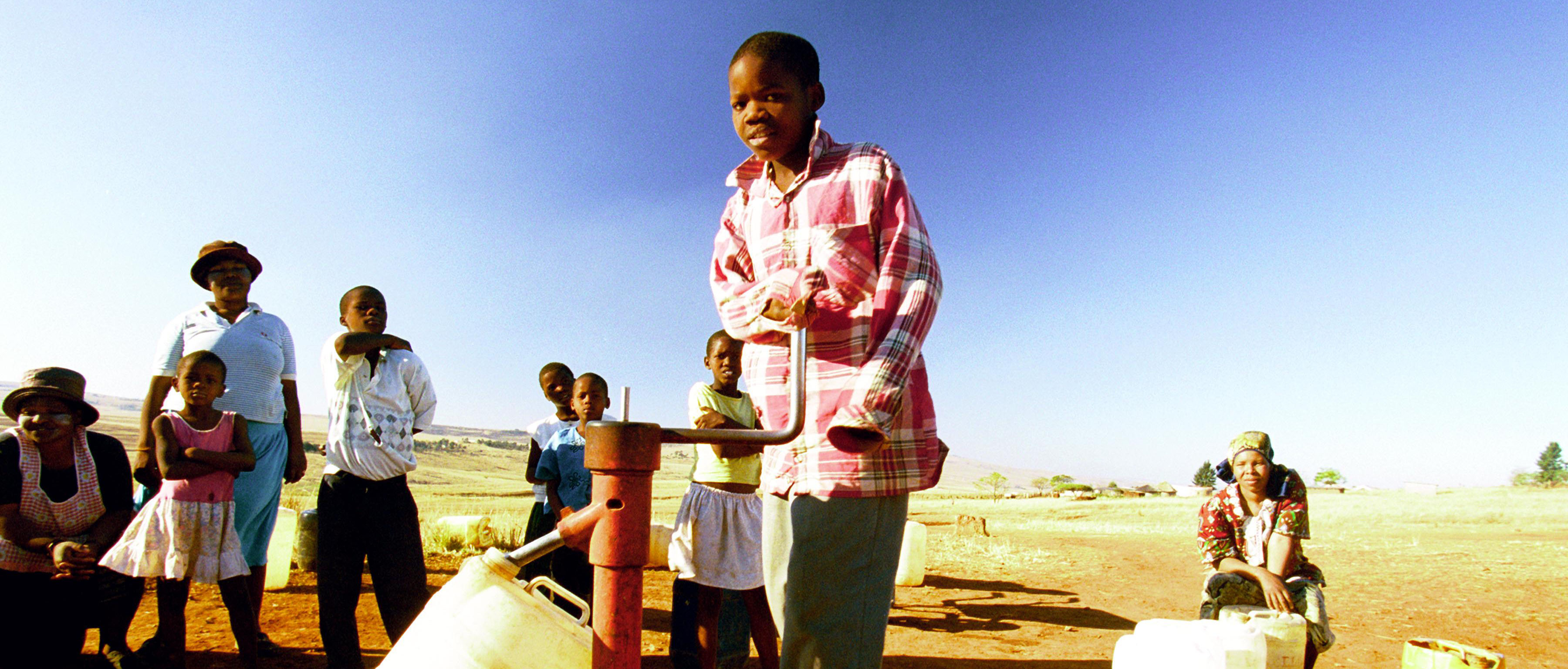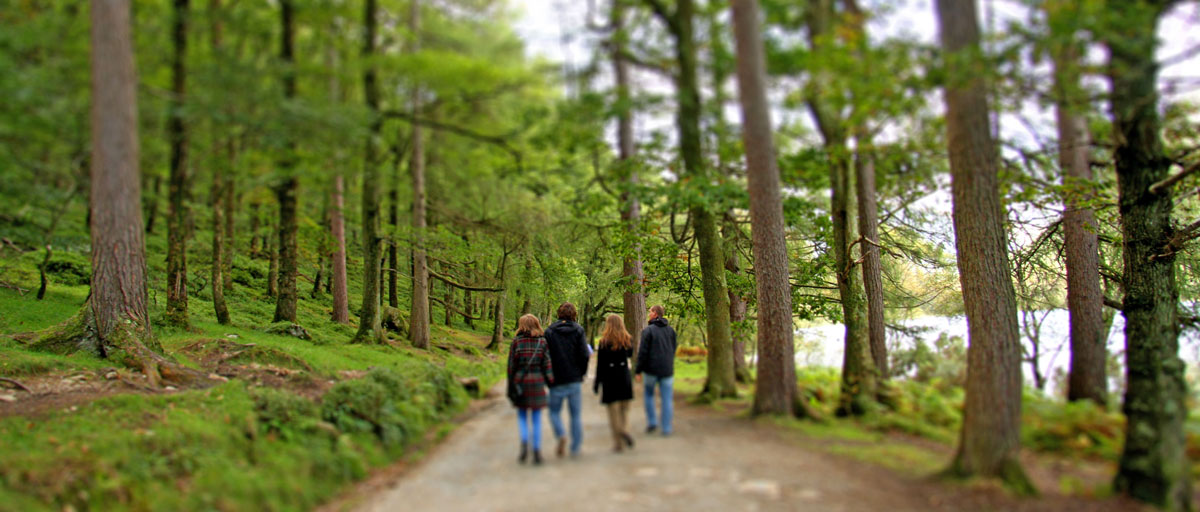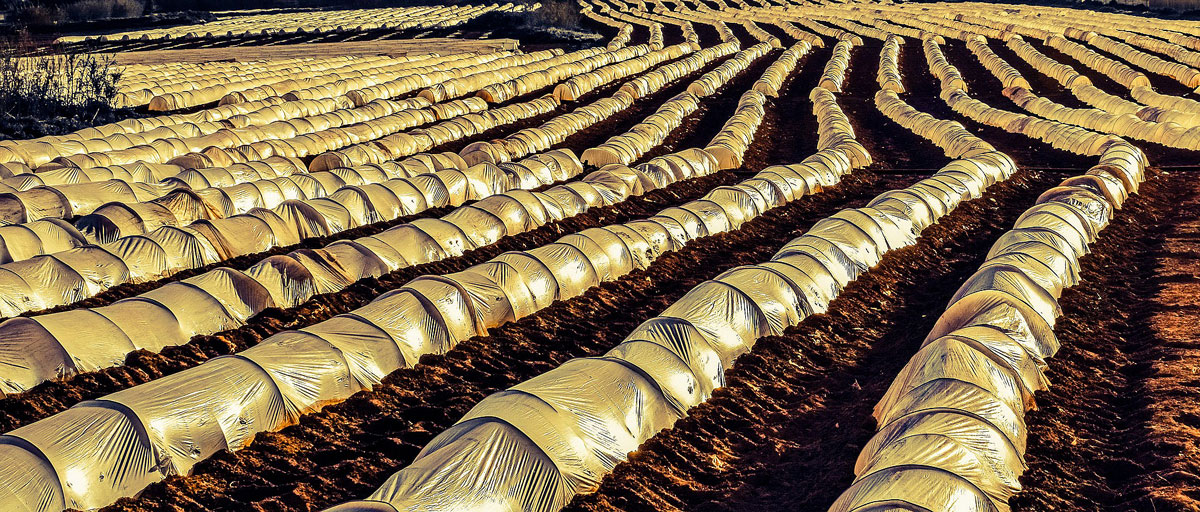
A study recently published in the journal Landscape Ecology has identified hot and cold spots for ecosystem services in southeast Spain, where areas have been called “the plastic sea of Almería” because of their high concentration of greenhouses. The study also asked locals how they perceived the importance of these different services. Photo: Pixabay
Bildtext får vara max två rader text. Hela texten ska högerjusteras om den bara ska innehålla fotobyline! Photo: B. Christensen/Azote
ECOSYSTEM SERVICES
Bundles of unknown services from nature
New study maps for the first time the interaction between ecosystem services while gauging the inhabitants’ knowledge and appreciation of them. Not all services are getting the credit they deserve
- Study identified seven ecosystem services bundles across 160 municipalities in southeast Spain along with assessments of the public awareness of them
- Respondents identified tourism as the most important service followed by traditional agriculture. Intermediate services such as water and climate regulation, intensive agriculture and soil protection services were considered less important
- This shows that more effort is needed by policymakers and researchers to raise awareness about why intermediate services are important
Nature has really been sold short. We are often unaware of the benefits we obtain from nature, the ecosystem services, like clean water, pollination, fertile soils, and fresh air. Although we benefit greatly from them, we hardly pay for these services. Beyond that, they often come packaged together so we are getting more than one service at a time. Think of that next time you sit in a park enjoying the sun while eating some freshly picked blueberries.
Contrary to common sense, humans are transforming most the planet’s land surface to the point that many of the ecosystem services that support human well-being are being degraded or used unsustainably. And the detriment of one service may affect another.
To avoid this it is important to not only understand how they appear together but also how they are appreciated by humans in a given landscape.
A better understanding of how ecosystem services bundles are influenced by land use change will improve our ability to manage them more sustainably
Megan Meacham, co-author
Dramatic land use change
A study recently published in the journal Landscape Ecology maps for the first time explores the interactions between ecosystem services and humans across landscapes in southeast Spain. In what is one of the driest regions in continental Europe, a research team lead by Cristina Quintas-Soriano from University identified hot and cold spots for ecosystem services while gauging the local public’s knowledge and appreciation of them. The research team included centre researchers Megan Meacham, Albert Norström and Garry Peterson.
The region has witnessed a dramatic land use change over the past three decades. The biggest is the transition toward intensive greenhouse horticulture, giving it the name “the plastic sea of Almería” because of its high concentration of greenhouses (the largest in the world). The agricultural expansion has also promoted urban expansion and massive tourism along the coast. At the same time, the region has increased the number and size of protected areas, from 4% of the surface in 1980 to 20% in 2016. This contrasting development makes it important to understand how landscape and human use fit together.
“This study offers a comprehensive approach for understanding the distribution of ecosystem services bundles, including both the social and biophysical factors that shape them,” says lead author Quintas-Soriano.
Co-author Megan Meacham adds: “A better understanding of how ecosystem services bundles are influenced by land use change will improve our ability to manage them more sustainably.”
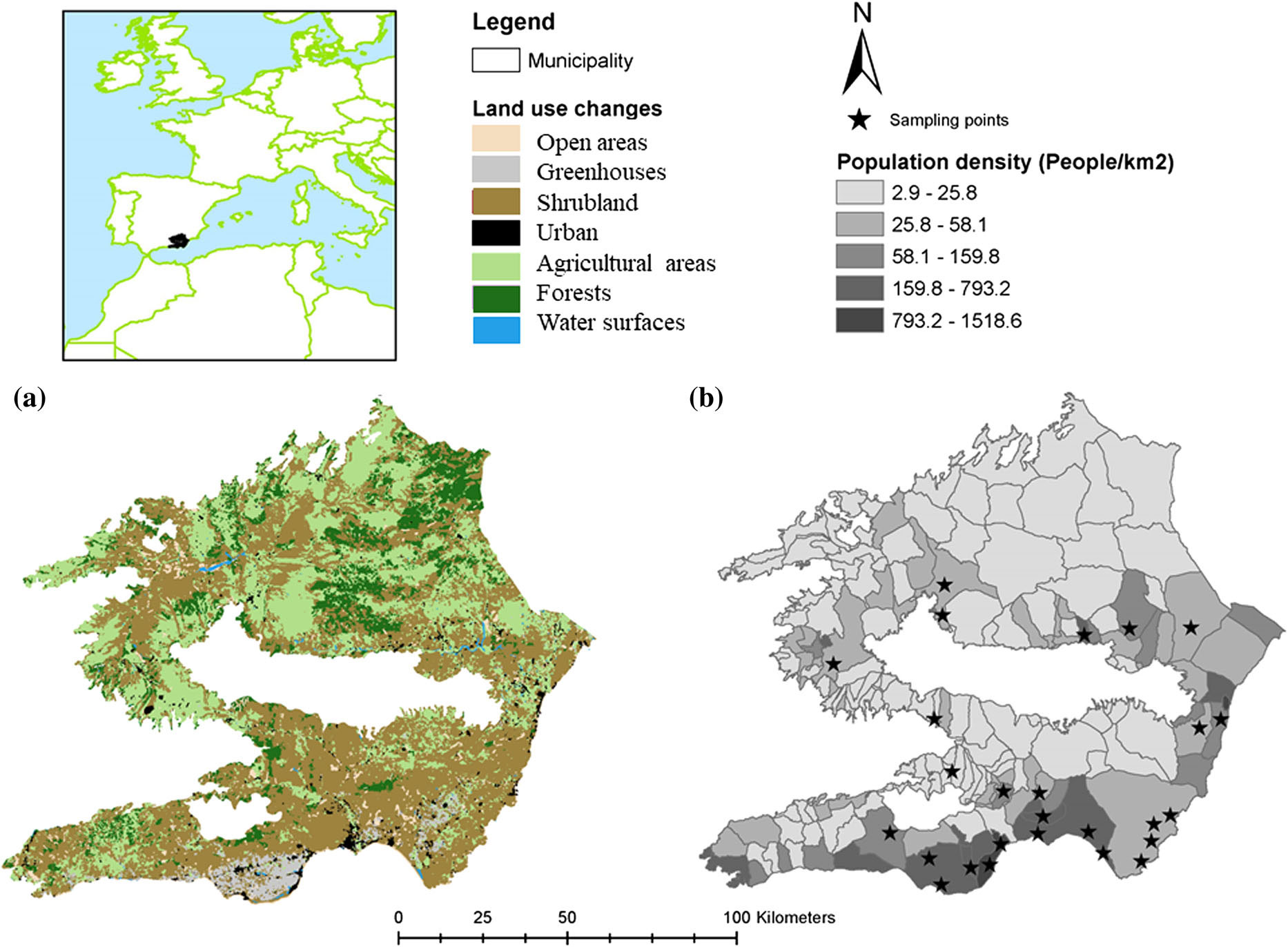
Location of the case study delimiting the arid and semiarid ecosystems of Iberian Peninsula: A) land use types represented with different colors across 160 municipalities, B) population density across municipalities and sampling points of the survey.
Tourism the most important service
The research team identified seven ecosystem services bundles across 160 municipalities. These services offer a direct or indirect benefit to humans. The indirect services, or “intermediate” as the researchers termed them, included climate regulation, water regulation, soil protection and habitat quality. Direct, or “final services”, included food from agriculture, intensive agriculture and tourism. These services were then presented to locals in the region, asking them how they perceived the importance of these different services.
“Our approach illustrates both which ecosystem services are more or less abundant across specific landscapes, as well as the level of public awareness across municipalities,” Meacham explains.
The results showed that respondents identified tourism as the most important service followed by traditional agriculture. Intermediate services such as water and climate regulation, intensive agriculture and soil protection services were considered less important. The fact that these services were given less emphasis highlights the difficulty of the local public to recognise the value of regulating services.
“This shows that more effort is needed by policymakers and researchers to raise awareness about why intermediate services are important and why arid landscapes are crucial for the provision of these services,” Quintas-Soriano says.
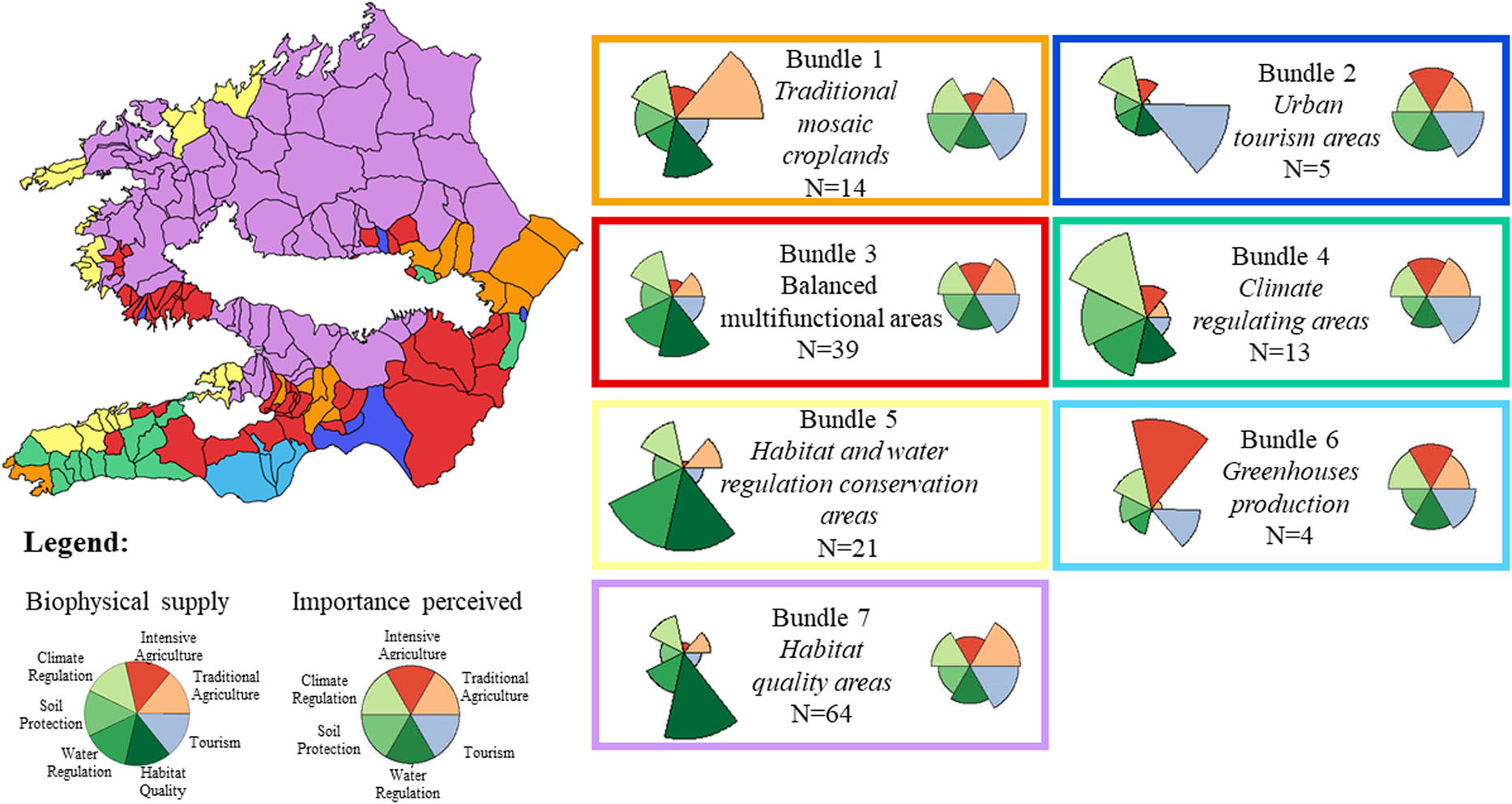
Ecosystem Services bundles identified by k-means clustering for thestudy area. N is the number of municipalities grouped in eachbundle. Flower diagrams show the biophysical supply and socialperceptions (importance perceived) for each ecosystem servicewithin each bundle.
Promote public participation
One solution is to get the local public more involved in environmental planning and decision-making. Further, the researchers argue, there is a need to combine formal knowledge with historically and culturally “consolidated” knowledge, traditions and practices. Only then can ecosystem and biodiversity objectives be met.
Their study, the researchers conclude, can be used by land managers to identify areas where certain ecosystem services are limited in supply and low in perception. These are priority areas for intervention to maintain the provision of those ecosystem services. It can also help identify conflicts associated with new management and planning practices.
“Incorporating both ecological and social dimensions in the assessment of ecosystem services brings trade-offs and bundles closer to the real-world realities spatial planners and decision-makers are working with,” Quintas-Soriano and her colleagues conclude.
Methodology
Pubilicly available statistics, biophysical metrics and ecosystem service models were used to map the seven ecosystem services across the region at the municipality level. Face-to-face social survers were conducted to assess people percieved importance of the range of ecosystem services. Seven ecosystem service bundles were found spatially distributed arcoss the region. Each bundle represents a reoccuring pattern of ecosystem service configuration in conjuction with a pattern of social preference for specific ecosystem services. The ecosystem service bundles were then categorized into different quadrants of a matrix based on their level of social awareness and ecosystem service supply. There were bundles that represent places with limited ecosystem service supply and low public perception, bundles that represent place with high ecoystem service supply and high public perception, and two categories of places with missmatched levels of ecosystem service supply and public perception – either high ecosystem servcie supply with low public awareness or low supply despite high public perception. The places that fall into the missmatched quadrants represent the best oppurtunities to target enviromental interventions to both increase ecosystem service supply to better match the preferences of the people living there and increase public’s awareness of the envriomental benefits they are receiving.
Quintas-Soriano, C., García-Llorente, M., Norström, A. et al. 2019. Integrating supply and demand in ecosystem service bundles characterization across Mediterranean transformed landscapes. Landscape Ecol (2019). https://doi.org/10.1007/s10980-019-00826-7
Megan Meacham is a PhD student studying the social-ecological process that provides for the reliable production ecosystem services.
Albert Norström works across multiple projects that all focus on exploring the reliable production of ecosystem services in social-ecological systems and their futures in the Anthropocene.
Garry Peterson is a professor in environmental sciences with emphasis on resilience and social-ecological systems. He is also head of subject in sustainability science at the Stockholm Resilience Centre


